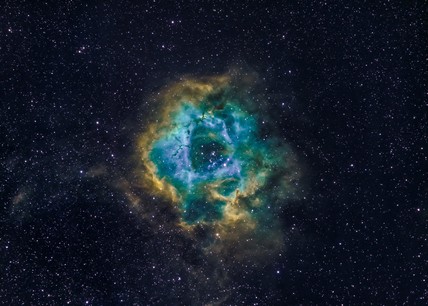Ural Federal University Experts Derive Russian Scientists Learn To Create Analogues Of Space Ice
Employees of the Ural Federal University’s Youth Research Laboratory of Astrochemical Research grew the first samples of interstellar ice analogs and for the first time obtained test infrared spectra of these ices (the quality of the spectra is not inferior to those obtained in foreign laboratories). Obtaining analogues of interstellar ice in the laboratories is important because it will help to analyze data from telescopes, in particular James Webb (JWST), and to determine the chemical composition of interstellar ice and its structure in space.
“Until a year ago, experiments to obtain spectra of interstellar ice analogs were conducted only abroad. Now we can conduct them in Russia as well. The quality of the obtained spectra is not inferior to those obtained in foreign laboratories. It is also important to note that one of the key elements of our experimental setup, the turbomolecular pump, is made in Russia,” Anton Vasyunin, Head of the Scientific Laboratory for Astrochemical Research at UrFU, commented on the results.
Interstellar ice forms in the cold formation regions of stars and planets from atoms and molecules that freeze at low temperatures from gas on the surface of microscopic cosmic dust particles. Studies of interstellar ice are necessary to understand the chemical evolution of the galaxy and to find answers to fundamental questions, in particular about the origin of life in the universe.
“Interstellar ice is being studied in the infrared wavelength range inaccessible from Earth. This is one of the main tasks of the James Webb Space Telescope launched a year ago, as well as a number of operating and projected domestic space and ground-based telescopes. In order to correctly interpret the data obtained on the JWST telescope and effectively plan observations, laboratory comparison spectra are needed,” explains Anton Vasyunin.
Russian scientists grew ice from water and methyl cyanide in a cryogenic super-high-vacuum experimental setup, which was designed in the laboratory at UrFU in two years. This installation makes it possible to create cosmic conditions – to reach pressures 10 trillion times lower than atmospheric pressure, the temperature of its working part can drop to -267 ℃, which is comparable with conditions in pre-stellar molecular clouds – the cradles of future stars and planetary systems.
As a result, experiments by UrFU astrophysicists have shown that scientists can grow ice of different composition, controlling the amount of reagents. In addition, using different methods, including obtaining spectra, they can determine the composition and structure of interstellar ice from the installation and from space, which brings us closer to answering the question of how life is formed in space.
As a reminder, in December 2021 it became known that astrophysicists from the Ural Federal University joined the team of scientists of the Ice Age Project, which will conduct observational studies of interstellar ice from data obtained on the James Webb Space Telescope (JWST) infrared telescope.

